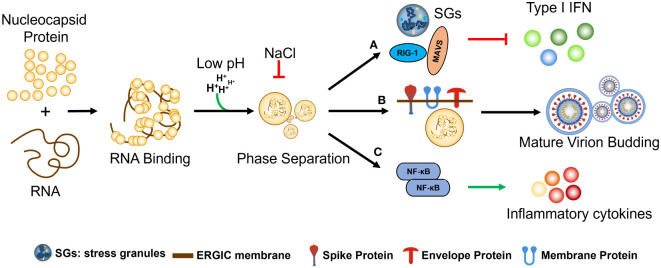Figure 5.
The regulation and functional significance of SARS-CoV-2 N protein phase separation. The phase separation of the N protein is initiated by its binding with RNA molecules of various lengths and is influenced by electrostatic forces such as pH and NaCl concentration. (A) The phase separation of the N protein has several effects, including the formation of stress granules (SGs) and interaction with key factors involved in the host cell’s antiviral response, such as MAVS and RIG-I, ultimately leading to the inhibition of type I interferon (IFN) production. (B) During the assembly and budding of mature virions, the N protein interacts with viral genomic RNA (gRNA) to form condensates, which are then anchored at the ERGIC membrane through co-phase separation (co-PS) with the SARS-CoV-2 M protein. (C) The N protein phase separation also regulates host-cell innate immune pathways by interacting with NF-κB activators, resulting in the upregulation of cytokine production. This, in turn, elicits an inflammatory response and the secretion of various cytokines, further contributing to the host immune response against SARS-CoV-2 infection.

